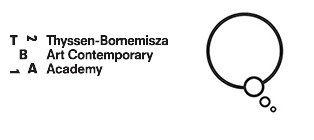SUPERFLEX, Expedition #2
October 20–November 3, 2019
Participants: Derya Akkaynak, Camila Jaber, Jun Kamei, Markus Reymann, Shanee Stopnitzky, Joey Tau, Daniela Zyman
Deep Sea Minding
Deep Sea Minding is a three-year transdisciplinary research project developed by SUPERFLEX. It explores the deeper parts of our consciousness, merging art and science to create new understandings of marine species at a time when the deep sea is closer than ever. Deep Sea Minding considers whether the water will become a destructive force or an element of transformation and proposes the creation of structures that could serve the needs and desires of both humans and marine creatures. Commissioned by TBA21–Academy as part of the three-year fellowship The Current, SUPERFLEX departs to Papua New Guinea on Expedition #2 accompanied by oceanographers, material scientists, marine biologists, activists, and curators.
Expedition #1 was an exploration of the deep sea, in Expedition #2, we will rise to the surface. Humans are bound to the surface of the Earth. Even when we climb the highest mountain we are still bound to the surface of the mountain. Only in the ocean the opportunity arises to break free from this constriction, submerging ourselves below the surface and immersing ourselves in its boundlessness.
Why would we want to go beyond the surface?
We know about the depths of the planet. We know that about 95 percent of life in the ocean exists below the surface and we know that we know very little about these life forms. This planetary unconsciousness is mirrored by the depths of our own minds. We awake almost every morning with strange dreams of which we cannot explain.
Perhaps the rising surface of the ocean invites us to reimagine all the world’s surfaces. What if we were to understand this not just as a shift in the relation between the oceans and the land, but between our rational minds and the deep unconscious, between being human and being fish, between being dead and alive, between past and present.
Perhaps we don’t really want to break through to the other side but the surface is already moving. Whether we like it or not, the other side is coming!
—SUPERFLEX
About SUPERFLEX
SUPERFLEX is an artist group founded in 1993 by Jakob Fenger, Bjørnstjerne Christiansen and Rasmus Nielsen. Through a complex and diverse practice, SUPERFLEX challenges the role of the artist today and explores the nature of globalisation and the systems of power. Describing their work as tools, multiple areas of application or use are implied. SUPERFLEX’s practice is, as the name suggests, not bound to any form or context.
About The Current
TBA21–Academy’s The Current is concerned with the state of the ocean and the discourse around it and seeks to provide a platform for the cultivation of interdisciplinary thought, the exchange of ideas and new knowledge production. Organised in three-year cycles, the programme centres around annual expeditions at sea and land-based Convenings linked to the exploratory theme of each ocean encounter. Each cycle of The Current is led by one or more Expedition Leaders selected by the Academy, who in turn nominate Fellows—artists, curators, scientists, and other cultural actors—to join a collective research project unfolding over the three years. Chus Martínez and SUPERFLEX have been appointed by TBA21–Academy as Expedition Leaders of the second three-year cycle of The Current. Their projects will run in parallel from 2018 to 2020.
About TBA21-Academy
TBA21–Academy leads artists, scientists, and thought-leaders on expeditions of collaborative discovery. Founded by Francesca Thyssen-Bornemisza and led by Director Markus Reymann, the Academy is dedicated to fostering a deeper understanding of the ocean through the lens of art and to engendering creative solutions to its most pressing issues. TBA21–Academy commissions interdisciplinary research that catalyses engagement, stimulates new knowledge, and inspires artistic production. Established in 2011, the nonprofit’s programme is informed by a belief in the power of exchange between disciplines and in the ability of the arts as a vessel for communication, change, and action.



